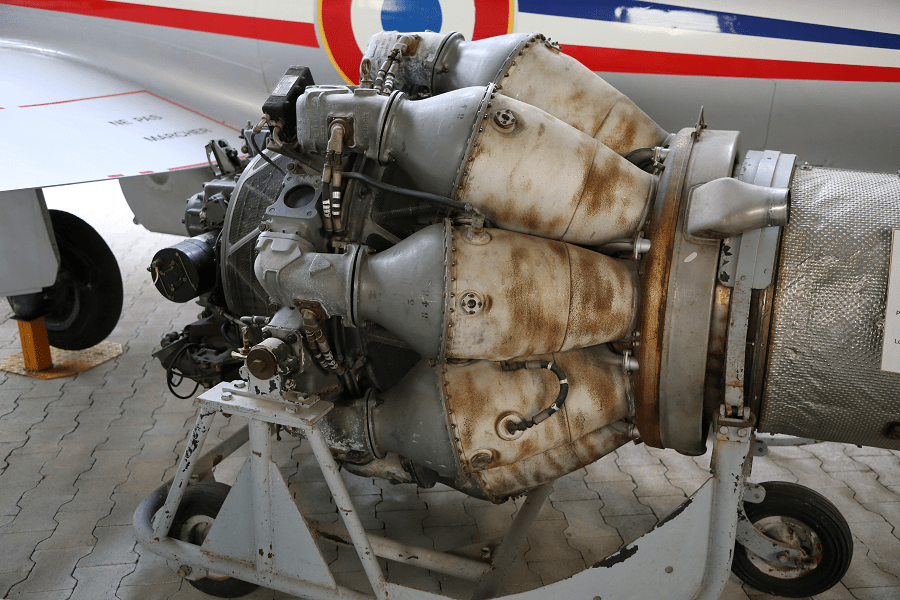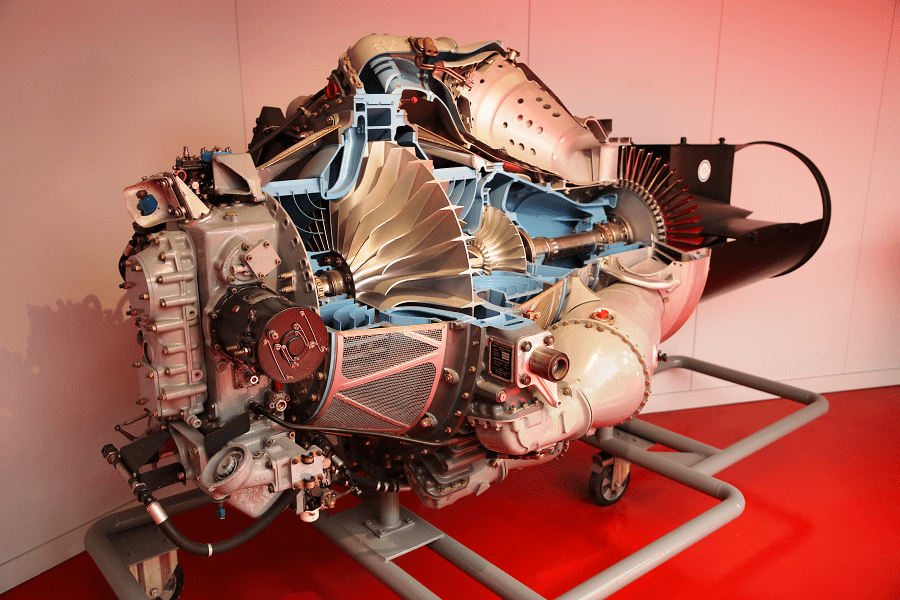Hispano-Suiza RB.41 Nene (Rolls-Royce licence)
The Rolls-Royce RB.41 Nene is a 1940s British centrifugal compressor turbojet engine. The Nene was a complete redesign, rather than a scaled-up Rolls-Royce Derwent, with a design target of 5,000 lbf (22 kN), making it the most powerful engine of its era. First run in 1944, it was Rolls-Royce’s third jet engine to enter production, and first ran less than 6 months from the start of design. It was named after the River Nene in keeping with the company’s tradition of naming its jet engines after rivers.
The design saw relatively little use in British aircraft designs, being passed over in favour of the axial-flow Avon that followed it. Its only widespread use in the UK was in the Hawker Sea Hawk and the Supermarine Attacker.
In the US it was built under licence as the Pratt & Whitney J42, and it powered the Grumman F9F Panther. Its most widespread use was in the form of the Klimov VK-1, a reverse-engineered, modified and enlarged version which produced around 6,000 lbf (27 kN) of thrust, and powered the Soviet built MiG-15, a highly successful fighter aircraft which was produced in vast numbers.
Country: United Kingdom
First run: 27 October 1944
Length: 96.8 in (2,459 mm)
Diameter: 49.5 in (1,257 mm)
Compressor: single-stage centrifugal with double-sided impeller
Combustors: 9 x can combustion chambers
Fuel type: kerosene
Oil system: pressure feed, dry sump with scavenge, cooling and filtration
Maximum thrust: 5,000 lbf (22.2 kN) at 12,300 rpm
Specific fuel consumption: 1.06 lb/(lbf⋅h) (30 g/(kN⋅s))
Thrust-to-weight ratio: 3.226
Weight: 1,600 lb (726 kg)














